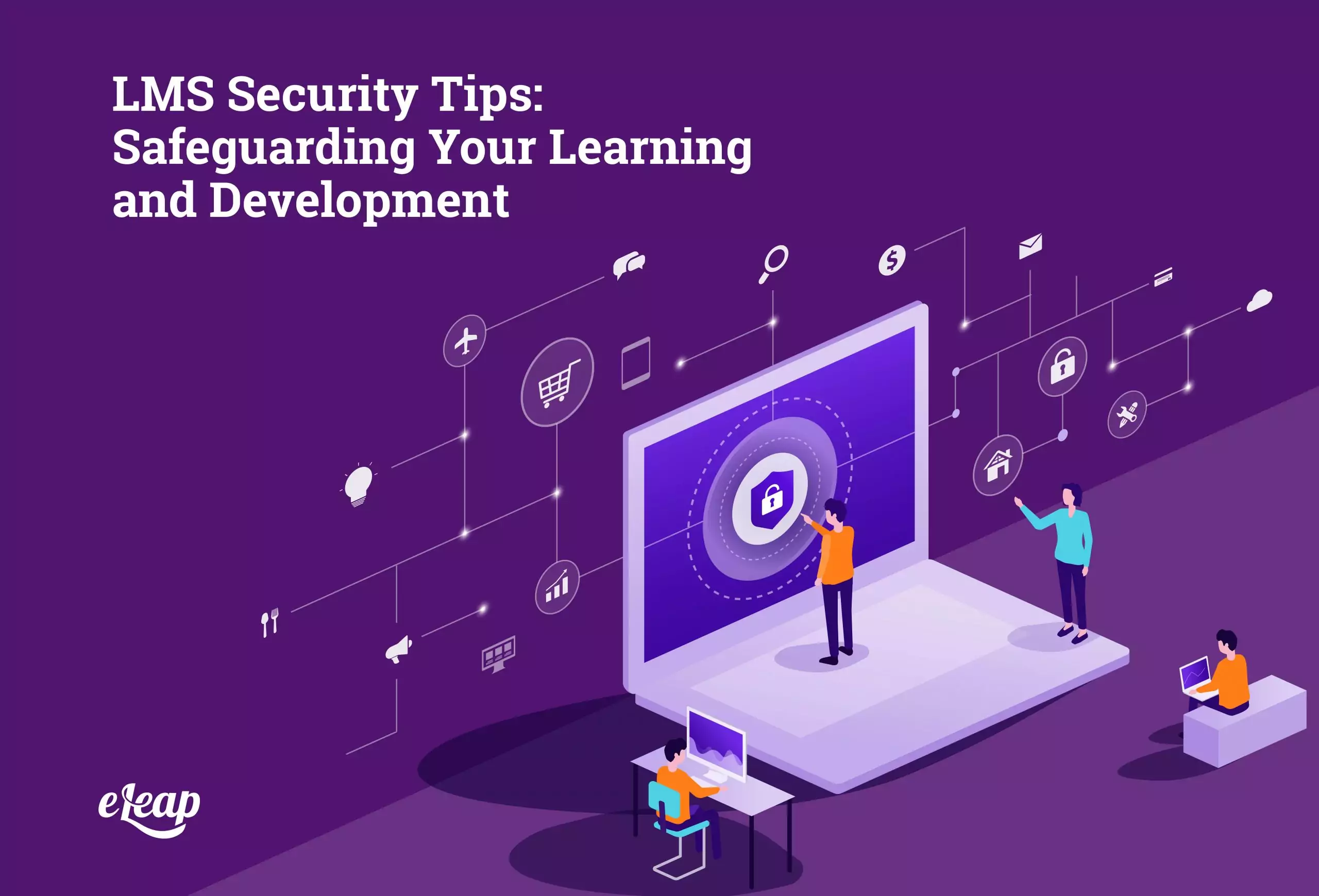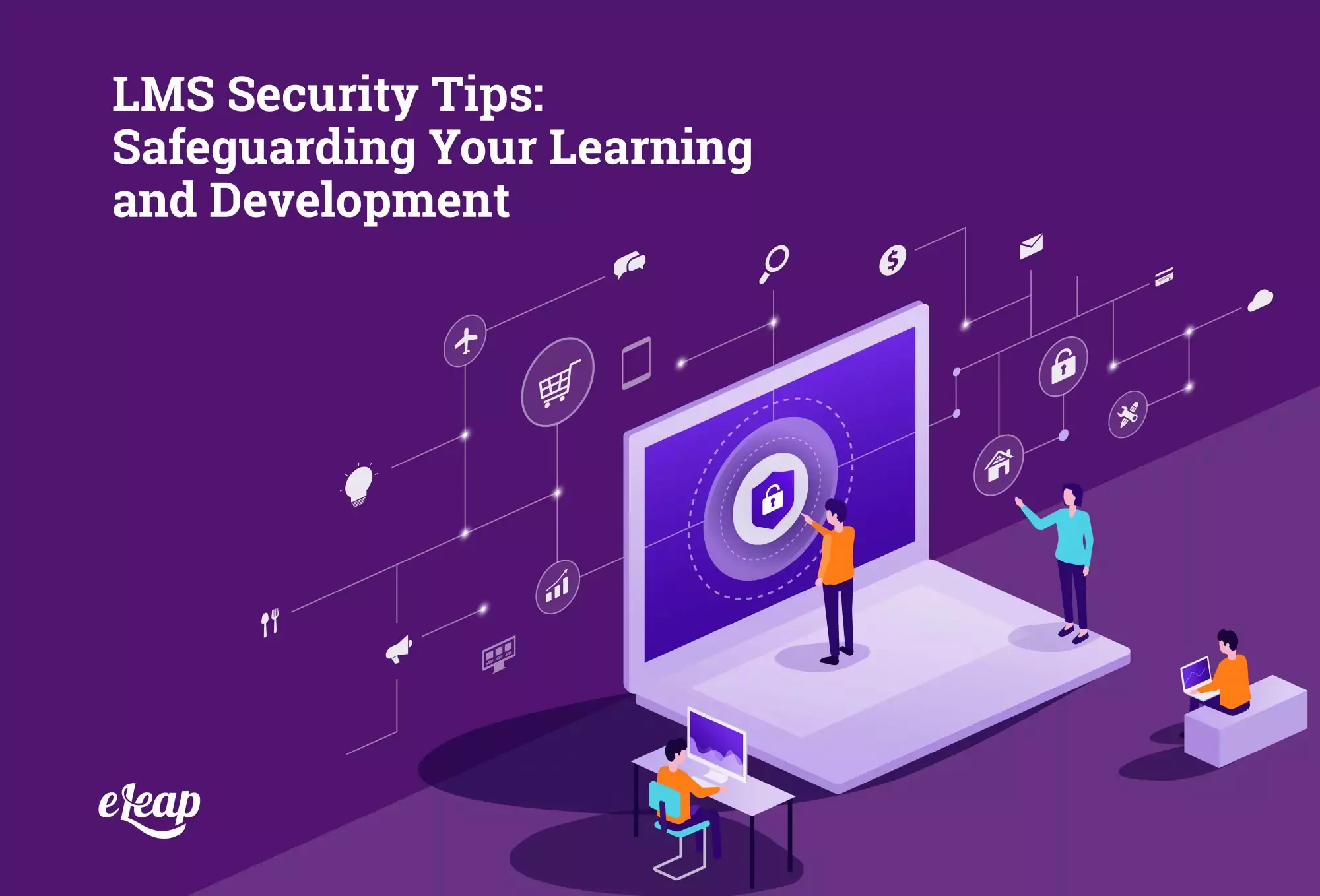LMS Security Tips: Safeguarding Your Learning and Development

Digital security is paramount in today’s environment. Cybercriminals have been stepping up their attacks for several years, and no longer focus only on enterprise-level organizations. Today, any business is fair game and even startups and SMBs can find themselves within the crosshairs.

There is no simple solution to cybersecurity, either. Protecting your data, as well as your customers’ information, requires a concerted effort across all fronts. That includes your learning management system.
In today’s digital world, everything is connected. An attacker can exploit a weakness within one system and use it to gain access to other systems or areas where sensitive information is stored. One of the most overlooked areas of security concern is your learning management system. It’s even more important to consider LMS security in today’s world, where many people continue to work remotely, which increases your security vulnerabilities.
The good news is that securing your LMS is not as difficult as it might sound. Simply following a few tips will put you on the road to better protection. With that being said, understand that there is no way to guarantee that you will not be the victim of a cyberattack. Vigilance and a good understanding of prevention techniques are vital.
Is Your LMS Really at Risk?
Yes, your LMS, and more specifically the data within it, are at risk. Cybercriminals are rarely interested in financial assets these days. They’re much more interested in data. And your LMS contains a lot of potentially valuable information that could be sold or used for nefarious purposes.
More than that, though, digital learning management systems can be connected to your wider network. Therefore, it is entirely possible that an attacker could breach the system and then use that to enter other parts of your network, possibly compromising critical business data, trade secrets, and much more. So, how do you protect your systems and your data? The answer is to ensure that you have access to critical LMS security features.
Password Features
The humble password and username combination is the key to entering your LMS. Make sure that you’re able to create a robust layer of protection here. How do you do that, though? Several features and steps can help, including the following:
- Two-Factor Authentication – This feature has been widely adopted by a wide range of companies, including Google. Two-factor authentication simply means that when your learner tries to log into the LMS, they must confirm their identity with another device, usually a smartphone. This combines two different elements of authority to prove their identity, their login credentials, and a physical device. Of course, devices can be spoofed, so this is just one layer of additional protection you should consider.
- Limited Login Attempts: Ensure that you don’t allow unlimited login attempts. This is how many brute force attacks happen – an attacker simply continues to try logging into the system until they get the right combination of letters, numbers, and special characters. Ideally, you should limit login attempts to no more than three. After the third consecutive failed attempt, the account should be locked down and require management to unlock it.
- Refresh Passwords: Let’s face it – most of us are pretty bad about password hygiene (regularly changing our passwords). Your LMS users are no different. Chances are good that you have some people who have never changed their password at all, and they might even be using the same password for more than one account, which is a major mistake. Set up your LMS so that it requires users to reset their password regularly – once per month would not be too infrequent. You also need to ensure that the system will not allow them to reuse previous passwords, or your efforts are all for naught.
IP Blocking
Every device with an Internet connection has an IP address (Internet Protocol address). It serves to identify the device within the network, but also the location of the device. IP blocking technology allows you to blacklist specific IP addresses and prevent dangerous sites and hosts from gaining access to the system and then to your server(s). Admins can add individual IP addresses to white or blacklists, but can also block entire IP address ranges to add further security to your LMS.
Anti-Spam Features
Once upon a time, spam was pretty innocuous. Today, that’s not the case. It can include very serious threats, including phishing emails, malware, and ransomware. Anti-spam capabilities help prevent spam from entering your LMS and provides a safe digital area for your learners.
Encryption
Sometimes, despite your best efforts, attackers may make it through your defenses, or they may intercept data as it is being transmitted across the Internet. Make sure that data is useless to them by encrypting it. Today’s advanced encryption technology can make it virtually impossible for cybercriminals to decrypt data and profit from it. When choosing an LMS, look for the Advanced Encryption Standard.
Mobile Device Security
One of the benefits of the modern LMS is the ability to access it remotely. However, that same feature is also a weakness. Make sure that your LMS offers robust mobile device security, including data encryption, advanced user authentication technology, and strong anti-virus protection. This aspect will continue to be important as more and more companies realize the benefits of remote work (even after the pandemic is just a memory).
Creating a Strong Defense
The tips we’ve covered above will help you safeguard your system and data. However, you cannot afford to be lax here. Regularly test your security for vulnerabilities. Remove any outdated data from the system, and verify that employees are practicing good password hygiene.
At eLeaP, our LMS offers robust security and encryption to safeguard your data and help prevent unauthorized access. However, remember that vigilance and a proactive stance are just as important as the right platform.